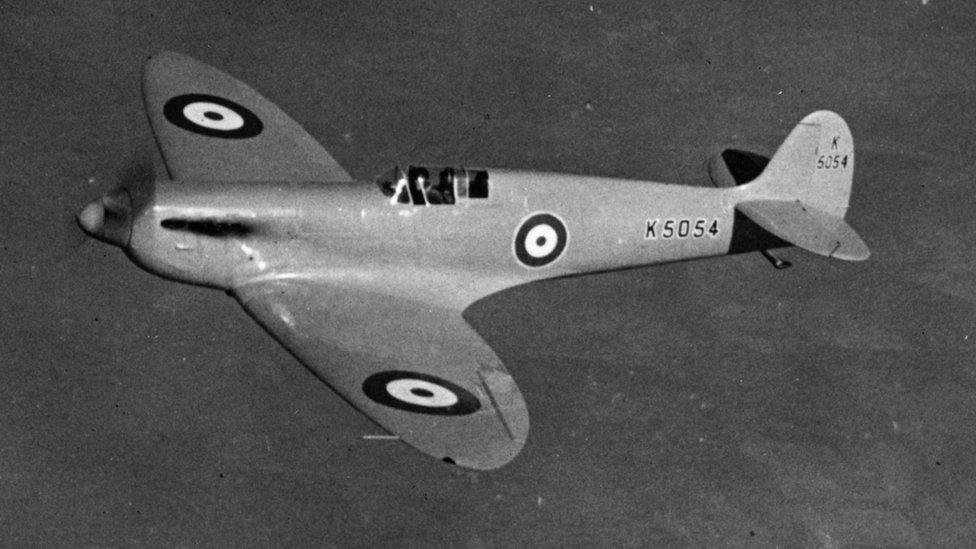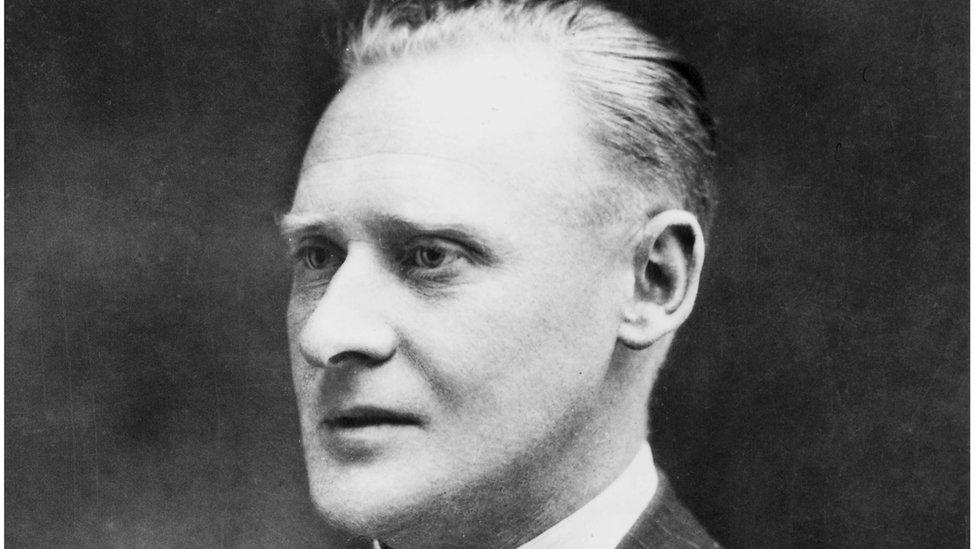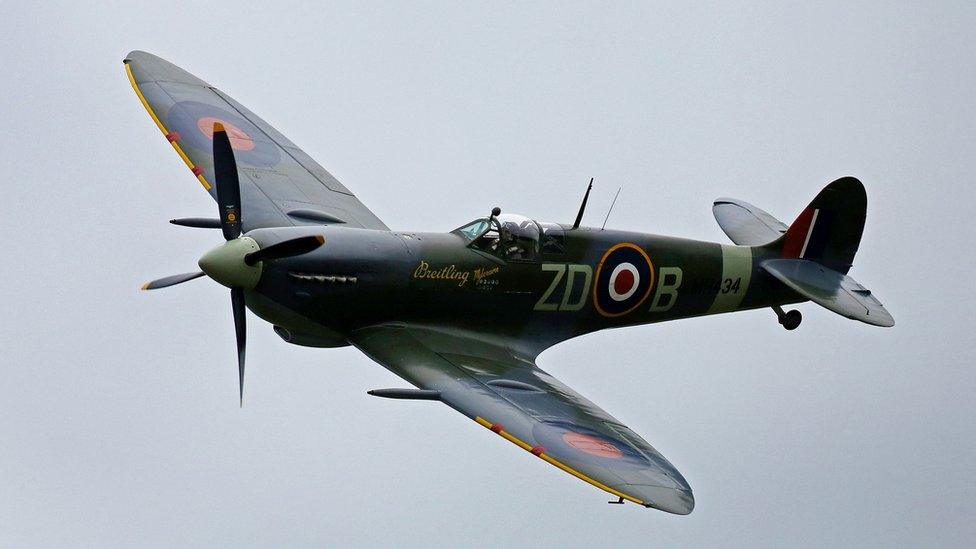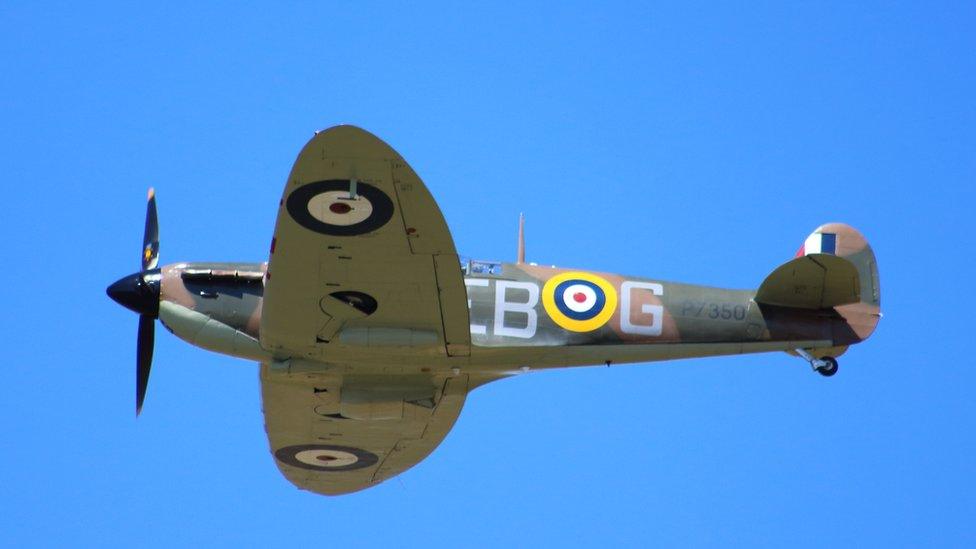Southampton Spitfire fly-past to commemorate first flight
- Published

The prototype K5054 plane was airborne for eight minutes on its first flight
A Spitfire is set to fly over the grave of its designer later to mark the anniversary of the plane's first flight.
Reginald (R. J.) Mitchell died before the World War Two aircraft entered production in Southampton.
He only ever saw his K5054 prototype airborne, including the first test flight on 5 March 1936.
The commemorative fly-past will cross over Southampton Airport and the grave at South Stoneham Cemetery.

The Spitfire's designer R. J. Mitchell only ever saw his first prototype in flight before he died
It has been timed to arrive from Biggin Hill Airport at 16:00 GMT to coincide with the hour of the first test flight.
Solent Sky Museum, which has also organised previous commemorative flights, said test pilot Capt Joseph "Mutt" Summers was "incredibly impressed" with the plane.
Curator Alan Jones said: "The story goes he got out of the plane and told people, 'don't touch anything'.
"It wasn't perfect but he didn't want anyone touching the controls so he could test it again."

A Spitfire will fly over Southampton Airport and Mitchell's grave in the city
The prototype Supermarine Spitfire took off from Eastleigh Aerodrome, now Southampton Airport, for a flight which lasted eight minutes.
More than 20,000 were built between 1937 and 1947, gradually incorporating more powerful engines, new wing shapes and different armaments.
Its manoeuvrability and speed helped to gain an advantage over enemy aircraft, according to Imperial War Museums (IWM).
During World War Two, Spitfires shot down a total of 529 enemy aircraft for a loss of 230 of their own, IWM said.

Follow BBC South on Facebook, external, Twitter, external, or Instagram, external. Send your story ideas to south.newsonline@bbc.co.uk, external.
- Published9 March 2022

- Published5 March 2016

- Published5 March 2016
